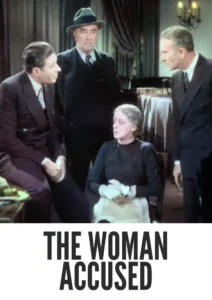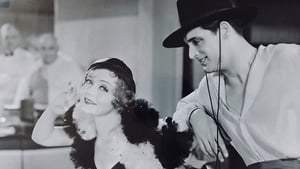Video Sources 0 Views
- The Woman Accused 1933 Colorized


Download The Woman Accused (1933) Colorized HD | Cary Grant | Gripping Drama Classic
Synopsis
Table of Contents
ToggleJustice, Lies, and a Fight for Freedom: The Woman Accused (1933) in Stunning Color

Dive into the riveting world of The Woman Accused, a gripping drama from 1933, now beautifully colorized for a visually stunning experience. Starring Cary Grant, this classic courtroom drama explores themes of justice, morality, and the lengths one woman will go to protect herself. Perfect for fans of classic cinema and captivating storytelling, this HD download brings a thought-provoking and emotionally charged film to your screen.
The Woman Accused Storyline: A Trial of Secrets and Survival
The Woman Accused centers around Glenda O’Brien (Nancy Carroll), a woman haunted by a dark secret from her past. Years ago, while defending herself from a violent attack, Glenda killed her assailant. However, due to unforeseen circumstances, her actions remain shrouded in mystery.When a man from Glenda’s past resurfaces and threatens to expose the truth, she finds herself caught in a web of lies and deceit. As she fights to protect her reputation and freedom, she must confront the consequences of her actions and navigate a complex legal battle. With the help of a compassionate lawyer (Cary Grant), Glenda seeks to prove her innocence and reclaim her life. The Woman Accused is a suspenseful and emotionally charged drama that explores the complexities of morality and the pursuit of justice.
Movie Cast
The film features a talented cast of actors who bring this intense story to life:
- Nancy Carroll as Glenda O’Brien
- Cary Grant as Jeffrey Baxter
- John Miljan as Leo Young
- Louis Calhern as District Attorney
- Irving Pichel as Ralph
Movie Genre
The Woman Accused falls into the genre of gripping drama, with elements of courtroom suspense and emotional turmoil. Its exploration of complex moral issues and intense character dynamics makes it a captivating and thought-provoking film.
Historical Context: Early 1930s Cinema and Social Themes
Released in 1933, The Woman Accused reflects the social and cultural concerns of the early 1930s, including issues of gender, justice, and the role of women in society. The film was produced during a time when Hollywood was beginning to explore more controversial and socially relevant themes. While The Woman Accused may not be as widely known as some of the era’s iconic films, it offers valuable insights into the evolving landscape of American cinema and its engagement with contemporary issues.
Colorization Details
This colorized version of The Woman Accused has been meticulously restored using modern digital techniques, enhancing the visual appeal while preserving the film’s original atmosphere of suspense and drama. The colorization process involved carefully analyzing the grayscale tones of the original black and white footage and assigning appropriate colors to each scene. While the specific software used remains proprietary, the techniques employed included advanced algorithms for color palette selection and image enhancement. This painstaking process brings new life to the characters and settings, making the story even more engaging for modern audiences. While some may debate the merits of colorizing classic films, it introduces these films to a broader audience, ensuring their legacy for future generations.
Technical Details
- Director: Paul Sloane
- Screenplay: Bayard Veiller
- Story: Polan Banks
- Cinematography: Henry Gerrard
- Edited by: William Morgan
- Production Company: Paramount Pictures
- Distributed by: Paramount Pictures
- Runtime: 76 minutes
Technical Specifications
- Download Format: MP4
- Resolution: HD (1080p)
- Compatibility: Compatible with most devices, including smartphones, tablets, computers, and smart TVs.
Reviews and Critical Reception
The Woman Accused (1933) is a compelling drama that showcases the talents of its cast and explores complex themes of justice and morality. While it may not be considered a major classic, it remains a fascinating and thought-provoking example of early 1930s cinema. As a relatively obscure but intriguing film, The Woman Accused provides a unique perspective on the social and cultural concerns of its time.
FAQs
- Q: What is The Woman Accused about?
- A: The Woman Accused is a courtroom drama about a woman fighting to prove her innocence after being accused of murder.
- Q: Is The Woman Accused (1933) a well-known Cary Grant film?
- A: While not one of his most famous roles, The Woman Accused offers a glimpse into Cary Grant’s early career and his versatility as an actor.
- Q: Is this version of The Woman Accused colorized?
- A: Yes, this version has been professionally colorized to enhance the viewing experience.
- Q: What makes The Woman Accused interesting for classic film fans?
- A: The Woman Accused offers valuable insights into the social and cultural concerns of the early 1930s, as well as showcasing the talents of its cast.
- Q: What is the download format?
- A: The download format is MP4, which is compatible with most devices.
- Q: What resolution is the download?
- A: The resolution is HD (1080p), providing a high-quality viewing experience.
Download Now in HD!
Watch The Woman Accused Today!










